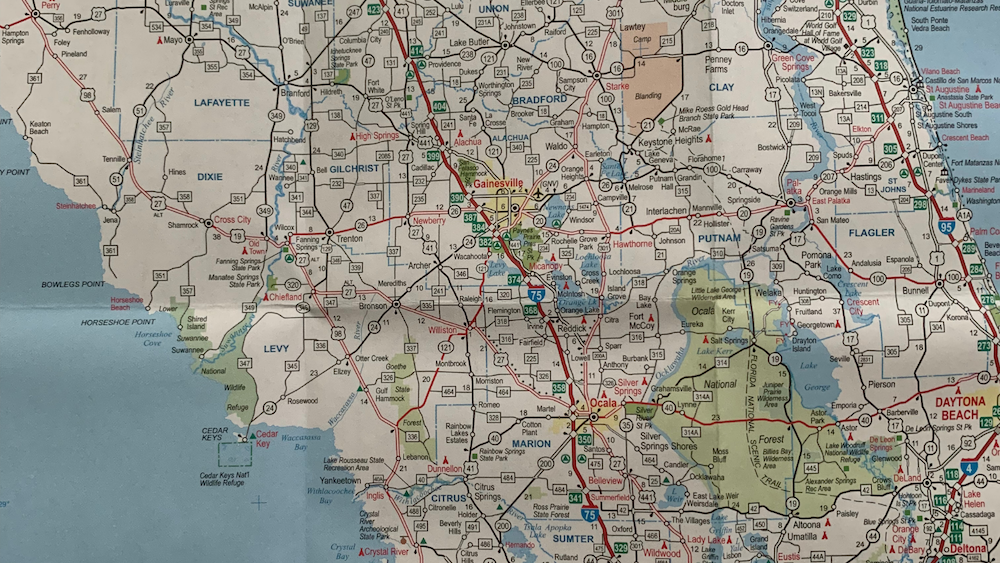
By Cecile M. Scoon, Esq., League of Women Voters of Florida President
Since the 2020 election, Florida’s state Legislature has enacted numerous measures that impact how Floridians vote and how their voices are heard. One of the ways that Florida citizens’ voices are either elevated or muted is by the process of redistricting.
Redistricting is the process of drawing new district maps for states and local communities. By determining which neighborhoods, cities, and other jurisdictions are included in each mapped boundary, redistricting affects how our communities are represented in the federal, state, and local government, as well as determining how resources are distributed. Redistricting lines are drawn every 10 years after the conclusion of the decennial Census. The state Legislature is tasked with redrawing maps for congressional districts as well as their own state House and Senate districts. The results of the Census determine the number of representatives each state will receive in the U.S. Congress. The results of the 2020 census reflected that Florida’s population had grown, and our state in turn was awarded one additional congressional seat, giving Florida 28 representatives out of the 435 in total.
Below are key terms related to the process of redistricting that all voters should know:
- Gerrymandering is the process where redistricting lines are drawn unfairly to favor one political party over another, sometimes harming racial minorities and language minorities.
- Cracking is a type of gerrymander. Cracking is when mapmakers break up a cluster of a certain type of voters — people from a specifi c party, race, or language group — and spread them among several districts, diluting their vote. Cracking example: If a district were comprised of 60% racial minority, that allows voters to elect a representative who meets the needs of that 60%. Then a line was drawn leaving 25% of the population in one district and 35% of the population in another district, then neither of the two districts would have enough of a minority population to select a representative to meet their needs.
- Packing is another type of gerrymander. This is when members of a political party, race or language minority are all packed into one district so that they only get one representative of their choosing when they should have been divided up so that the party or minority group could select two representatives of their choosing. Packing example: In some areas, it would take around 48% of a minority group to select a representative of their choosing. When 90% of the minority group is placed in that district, all votes over the 48% are wasted, as they do not get an additional representative. It would be preferable to leave the 48% in one district and place the 42 % in the next district so minorities have an opportunity to select two representatives of their choosing.
- In Florida, the people have the right to propose amendments to the Florida Constitution through a petition process, this is commonly known as a Citizen’s Initiative. Sponsors of these initiatives must secure the required number of valid signatures for their initiative to be placed on a general election ballot. Citizen initiatives reflect the priorities of the people, not politicians.
Relevant Florida Redistricting History
- In 2010, using a Citizen’s Initiative, the citizens of Florida voted overwhelmingly to enact the Fair Districts Amendments to the state’s Constitution, imposing constraints on the worst abuses of gerrymandering and racially discriminatory redistricting. The Fair Districts Amendments came from the will of everyday citizens and demanded fairness from the state Legislature when drawing redistricting lines.
- In 2012, the Florida state Legislature publicly promised to follow the newly minted Fair District Amendments. Instead, breaking their promise, the Legislature intentionally violated the Fair District Amendments and drew political boundaries that unfairly favored the majority party and also unfairly limited the voting power of Black Floridians. The League of Women Voters of Florida and other civic-minded organizations sued the state legislature over the unfair maps shortly after their enactment. After many years of litigation, the legislature admitted in court that they had violated the Fair Districts Amendments and had illegally drawn lines to favor one party over the other. The Florida Supreme Court enforced the provisions outlined in the Fair Districts Amendments and protected against diminishing racial or language minorities’ voting power.
- In 2019, the United States Supreme Court, in the case Rucho v. Common Cause, pointed to Florida’s Fair Districts’ Amendments as an example for the other 49 states to follow in enacting laws to prohibit gerrymandering.
- In 2022, the League of Women Voters of Florida and other voting groups advocated for adherence to the Fair District’s provisions. Unfortunately, in the League’s view, the Legislature failed to abide by the Fair District’s provisions. The League alongside other voting rights groups including Equal Ground, Black Voters Matter, and Florida Rising, and several individual citizens have fi led suit challenging the 2022 congressional map. The League and the other plaintiffs’ in the lawsuit are asking the court to block the map enacted in the spring of 2022 and order the creation of a new map that complies with the Fair Districts Amendments. However, the map enacted in the spring of 2022 is currently in effect for the Nov. 8 election as this litigation is ongoing before a trial court.